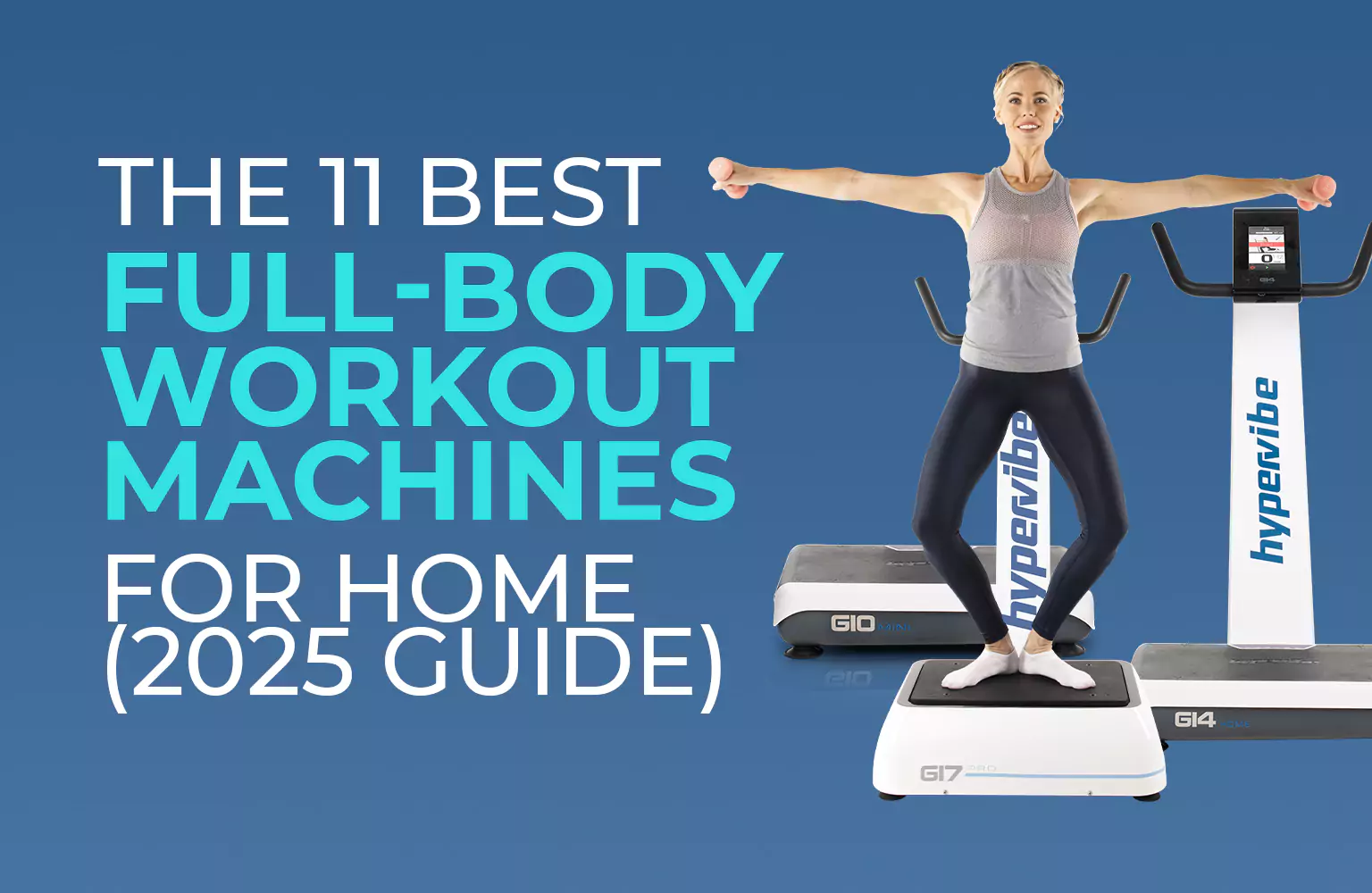
Do you have the desire to exercise but believe it’s easier to do so at home?
Keeping a home gym running can be expensive due to the huge variety of training equipment needed.
To keep all the equipment, you also need lots of space.
The solution: Find a full-body workout machine.
Not only does it solve these problems, but it is also the best way to make sure you exercise your whole body.
The best full-body workout machines for home include functional trainers, Whole Body Vibration Platforms, smart home gyms, and cardio machines like rowing machines and treadmills.
There is also some essential equipment like adjustable benches, dumbbells, and resistance bands.
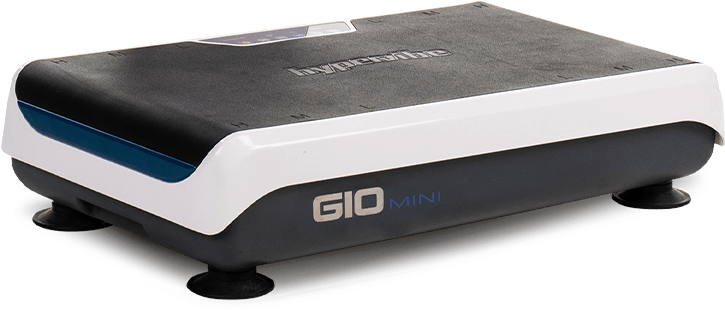




|
Machine |
Footprint (ft²) |
Resistance Range |
Cardio Score |
Price |
Best For |
|
Tonal 2 Smart Home Gym |
Minimal (70 in use) |
Up to 250 lbs Digital |
Medium |
$4,295 |
Adaptive strength, guided workouts |
|
~5 (plus user space) |
Vibration (up to 17G) |
Low–Medium |
$1,799 – $5,479 |
Recovery, rehabilitation, enhancing bodyweight exercises |
|
|
XMark Functional Trainer Dual 230lb Stacks |
~20 (plus user space) |
Dual 230 lbs (115 per cable) |
Medium |
$3,059 |
Advanced functional training, cable versatility |
|
Life Fitness G7 Multi-Station Home Gym |
~23 (80 recommended) |
Dual 160 lbs (80 per stack) |
Low |
$3,889 |
Commercial-grade feel, serious strength, dual users |
|
Total Gym XLS Total Body Training |
~12 (unfolded) |
Bodyweight (adjustable incline) |
Medium |
Not disclosed |
All fitness levels, low-impact, versatile bodyweight training |
|
BowFlex Xtreme 2 SE Home Gym |
~117 (workout area) |
210–410 lbs Power Rods |
Low |
$1,099 |
Traditional strength, wide exercise variety, moderate budget |
|
Fitness Reality 1000 Plus Rower |
~13 (unfolded) |
14 Magnetic Levels |
High |
$300–$400 |
Excellent full-body cardio, low-impact, joint-friendly |
|
Weider Pro 4950 |
~28 |
Up to 300 lbs |
Low |
Not disclosed |
Comprehensive strength, multi-station workouts |
|
BowFlex PR1000 Home Gym |
~54 (workout area) |
200 lbs Power Rods |
Medium |
Not disclosed |
Budget-friendly, light cardio, beginner-friendly |
|
BalanceFrom Home Gym System |
~22 |
122.5 lbs (330 effective) |
Low |
Starts from $500 |
Entry-level strength, compact, traditional gym exercises |
|
Marcy 150lb Stack Home Gym MWM-8147 |
~20 |
150 lbs Weight Stack |
Low |
$749.99 |
Entry-level strength, space-efficient, basic home gym |
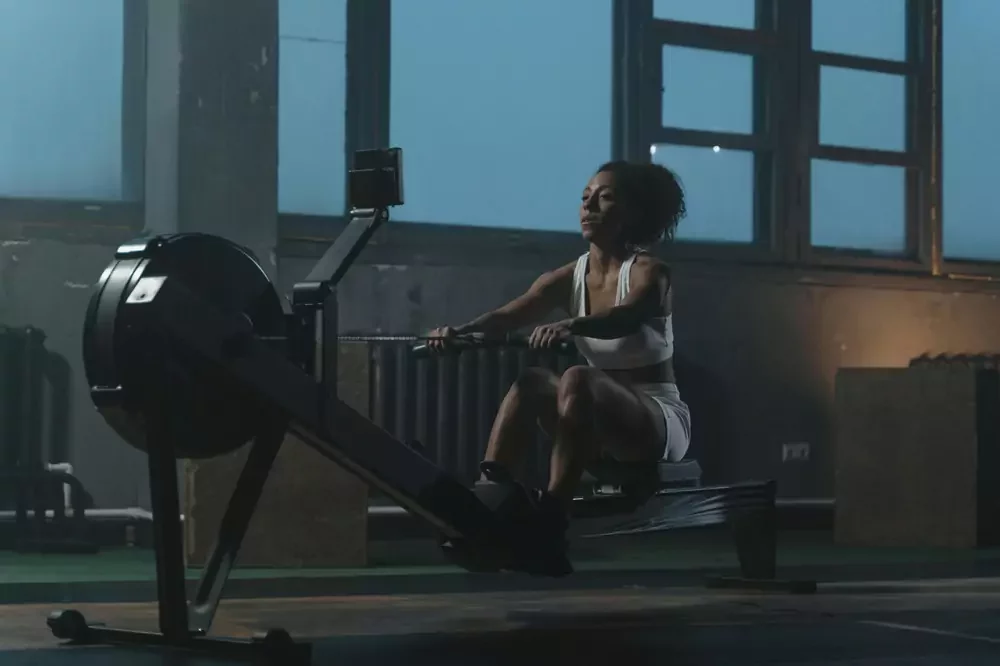
Woman using a home gym machine to work out (The Best Full-Body Machines of 2025)
Hypervibe’s G Series (G10, G14 and G17) redefines what a full-body workout machine can be at home or in a professional setting.
These vibration platforms use pivotal (oscillating) movement to provide intermittent forces, which activate rapid muscle contractions.
With simple changes in positioning, you can target your whole body in a short period of time.
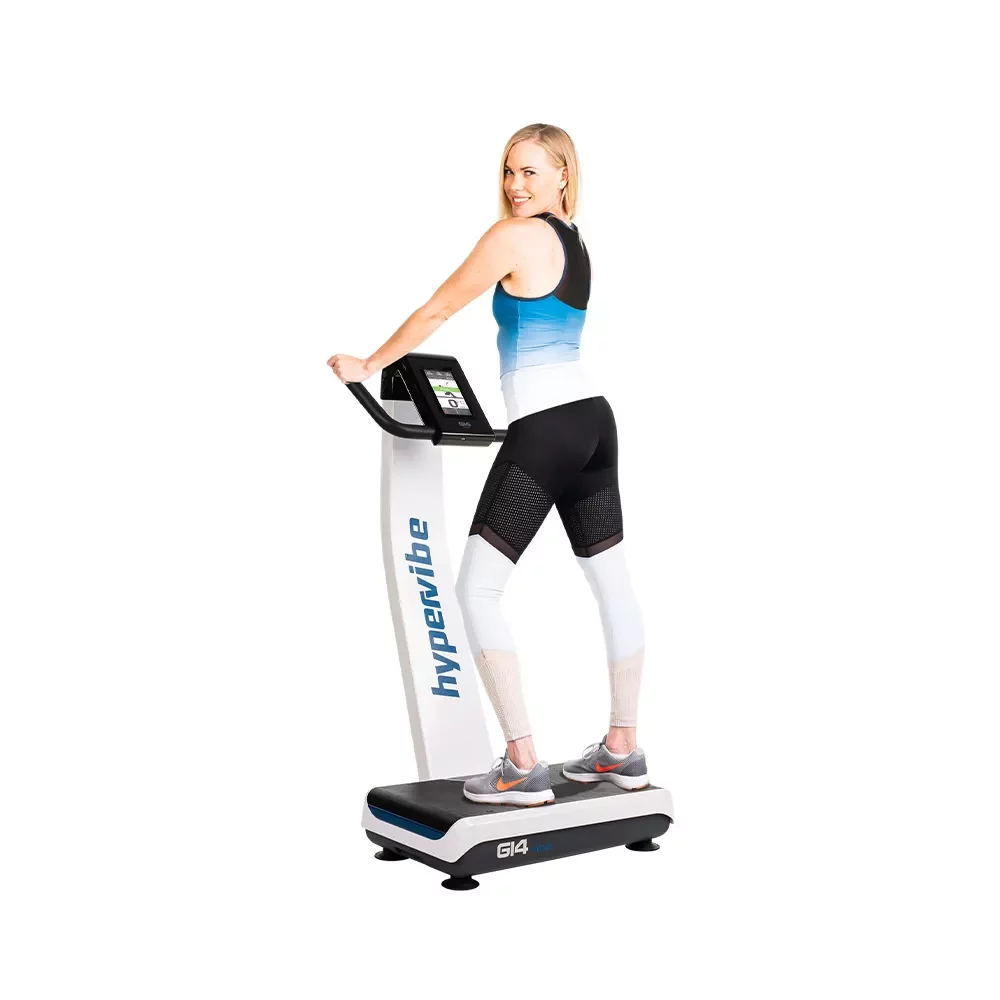
Hypervibe Whole Body Vibration Platforms
The standout feature across the series is G-force precision:
The two vary in weight capacity, size, and interactive features, so make sure to check the full breakdown here.
Pros:
Cons:
Best For:
Assembly Tips:
The G10 comes ready to use and can be set up by one person.
The G17 is heavier; you might need someone to help attach the upright console.
All models plug into a normal wall outlet, and no special wiring is needed.
If you’re looking for a sleek, all-in-one system that feels like a personal trainer is built right into your wall, the Tonal 2 Smart Home Gym is the ideal choice.
One of its most distinct features is its digital weight system.
Instead of bulky plates, it utilizes electromagnetic resistance (up to 250 lbs) and automatically adjusts to your strength in real time.
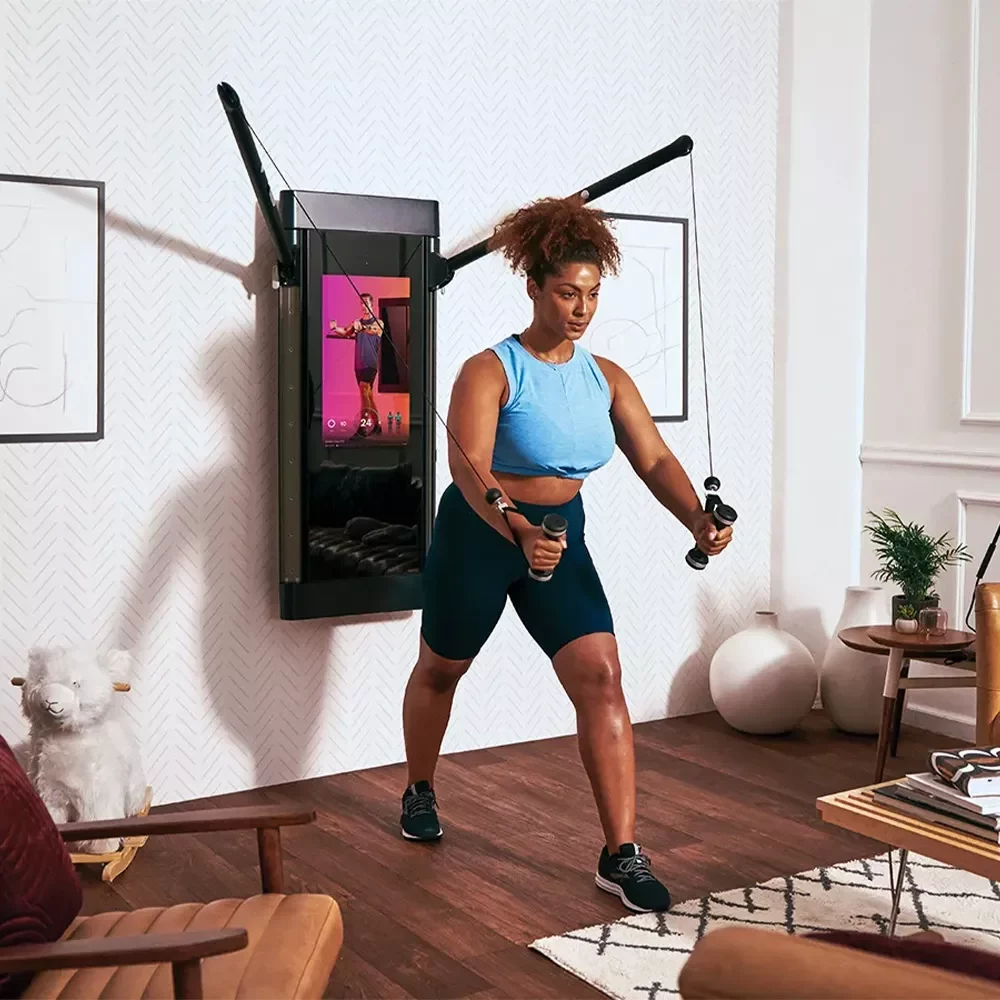
The Tonal 2 Smart Home Gym
Pros:
Cons:
Best For:
Assembly Tips:
Tonal must be professionally installed.
Make sure your wall has wood or metal studs (16–24” apart) and that the space is at least 7×7 ft with a 7’10” ceiling height.
You’ll also need a grounded 120V outlet within 6 ft.
Don’t attempt to DIY the setup because it voids the warranty.
The Xmark trainer is one of the most versatile full-body workout machines.
Its standout spec is the dual 230 lb weight stacks with a 2:1 pulley ratio, delivering 115 lb of smooth, isolateral resistance per side.
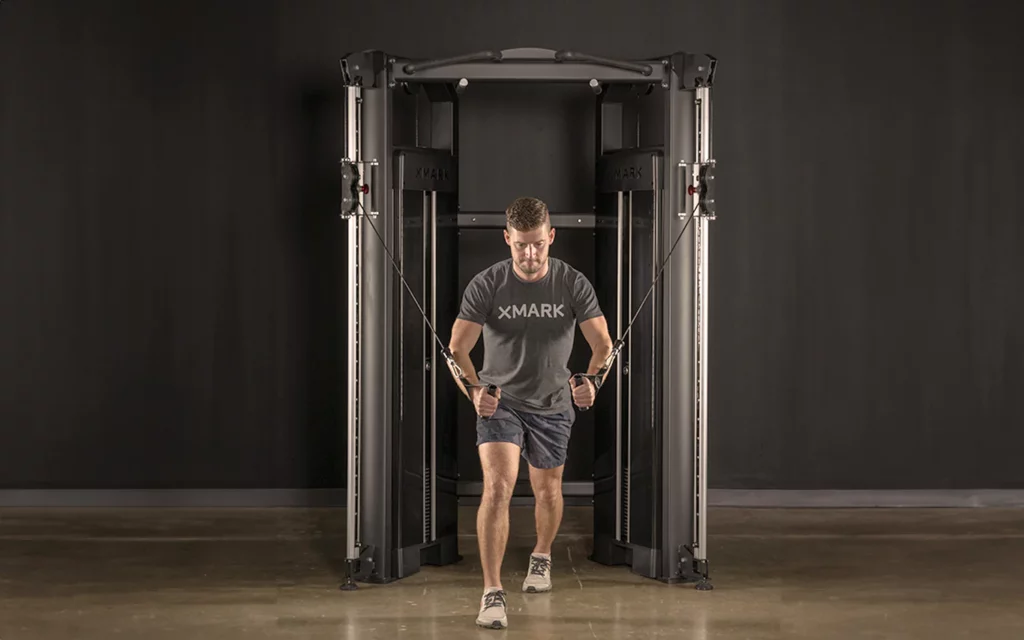
XMark Functional Trainer With Dual 230 lb Weight Stacks
Pros:
Cons:
Best For:
Assembly Tips:
Have someone assist you in setting it up.
Choose your space first, as it’s large and difficult to move.
The Life Fitness G7 is a high-quality home gym made for strength training.
It is a strong, long-lasting piece of equipment similar to what you’d find in a fitness center.
Its top feature is the dual 160 lb weight stacks, and thanks to the 2:1 pulley system, you get 80 lb of resistance on each side.
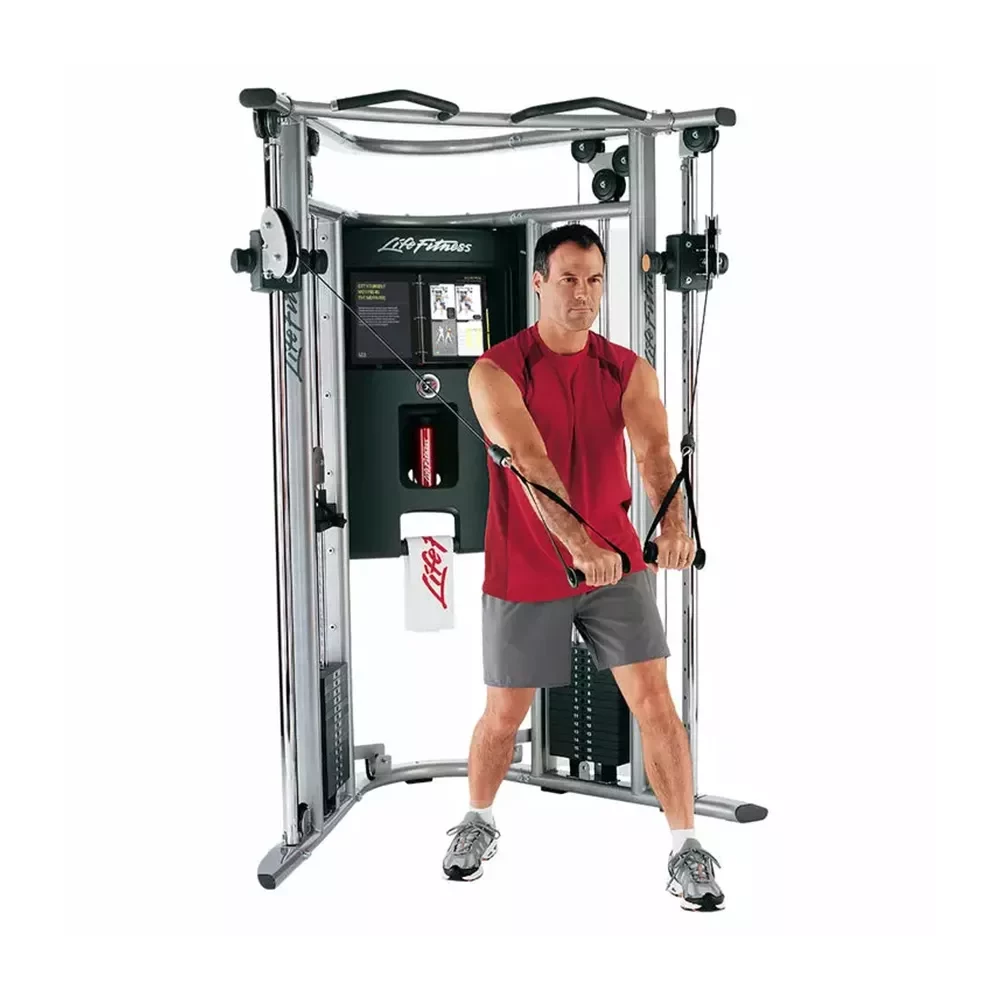
Life Fitness G7 Multi-Station Home Gym
Pros:
Cons:
Best For:
Assembly Tips:
If you won’t hire professionals, get at least two people to help and follow the instructions closely.
Be extra careful with how you set up the cables—they need to be connected in a specific way.
The Total Gym XLS uses one’s body weight and gravity to build strength.
It features a glideboard slide that can be adjusted to make exercises easier or harder along an incline.
It also includes six resistance levels and different exercises for a full-body workout.
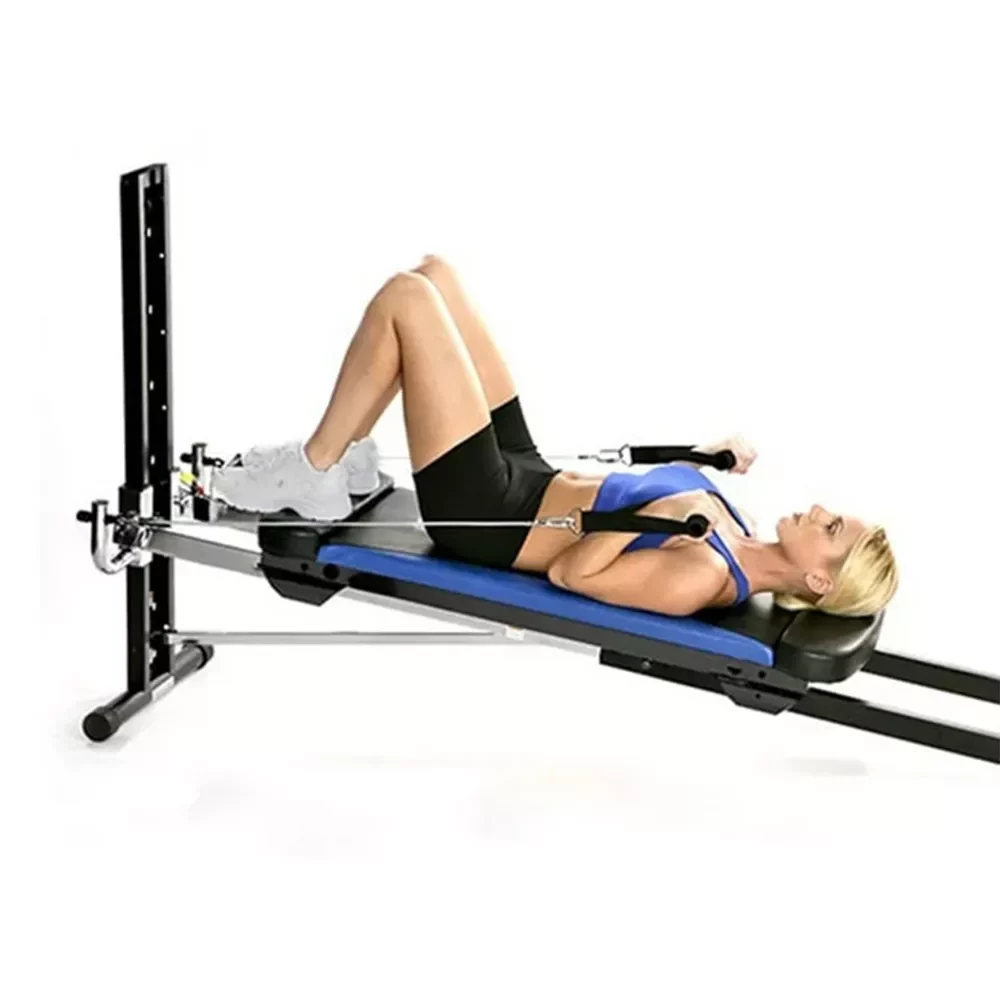
Total Gym XLS Total Body Training Home Gym Workout Machine
Pros:
Cons:
Best For:
Assembly Tips:
The machine comes folded and almost fully assembled.
Just unfold it, insert the safety pins, and clip the cables.
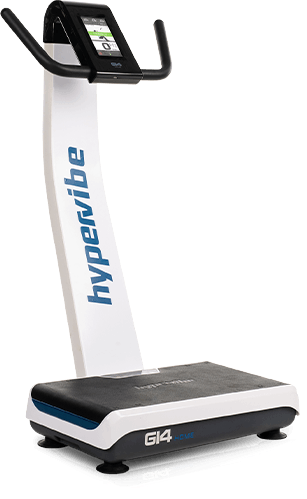




This machine is designed for full-body strength training without the use of traditional weight plates.
It features a power rod system, which utilizes flexible rods instead of metal weights, providing a smooth resistance while being gentle on your joints.
With over 70 possible exercises and a “no-change” pulley system, you can move from one workout to the next swiftly.
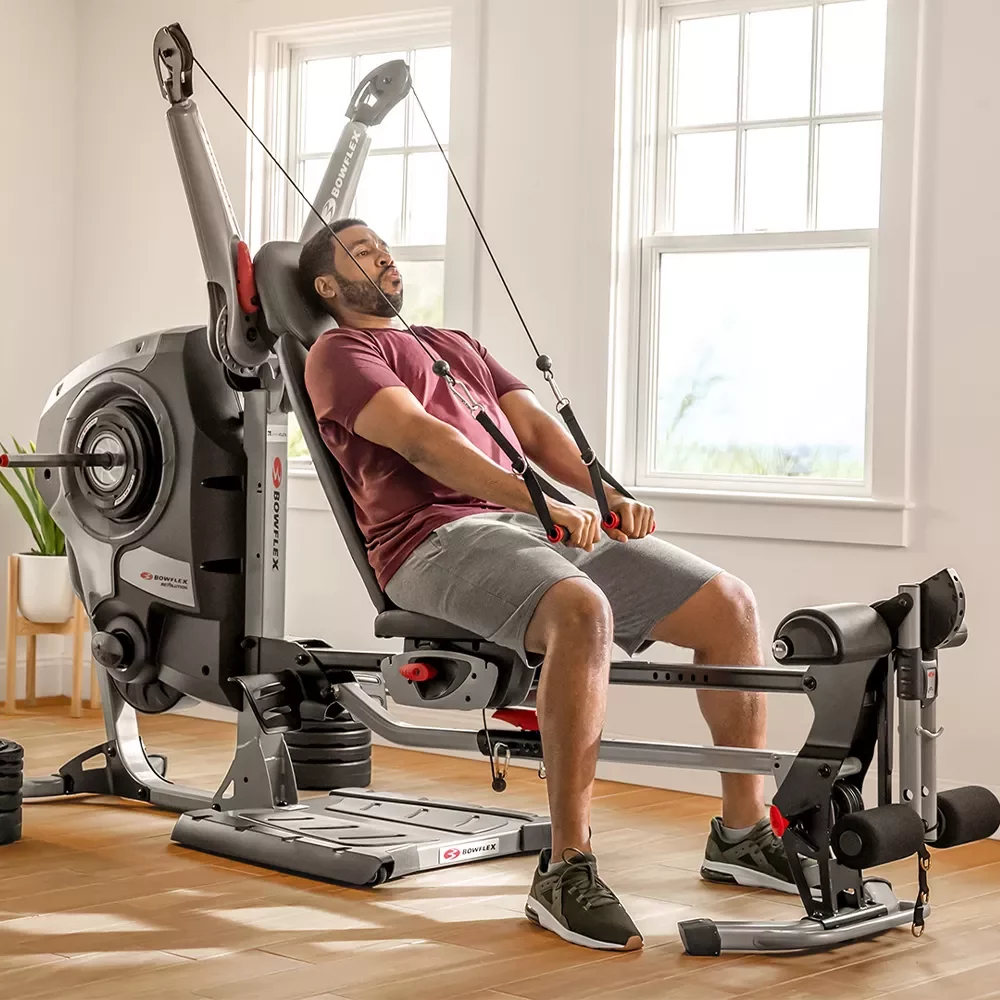
BowFlex Xtreme 2 SE Home Gym
Pros:
Cons:
Best For:
Assembly Tips:
Choose the final location before building, as it’s challenging to relocate afterwards.
Once it’s set up, check the bolts periodically and wipe down the rods to keep them working smoothly.
If you want solid cardio and full-body training at home without the noise, bulk, or steep learning curve, then this rower gets the job done.
The Fitness Reality 1000 Plus features magnetic resistance with 14 levels, providing a smooth, quiet, and easy experience on your joints.
And with the rowing motion with rowing machines believed to work up to 85% of your muscles, you’re building strength and burning calories in every session.
So, is a rowing machine a good full-body workout? Yes, it is.
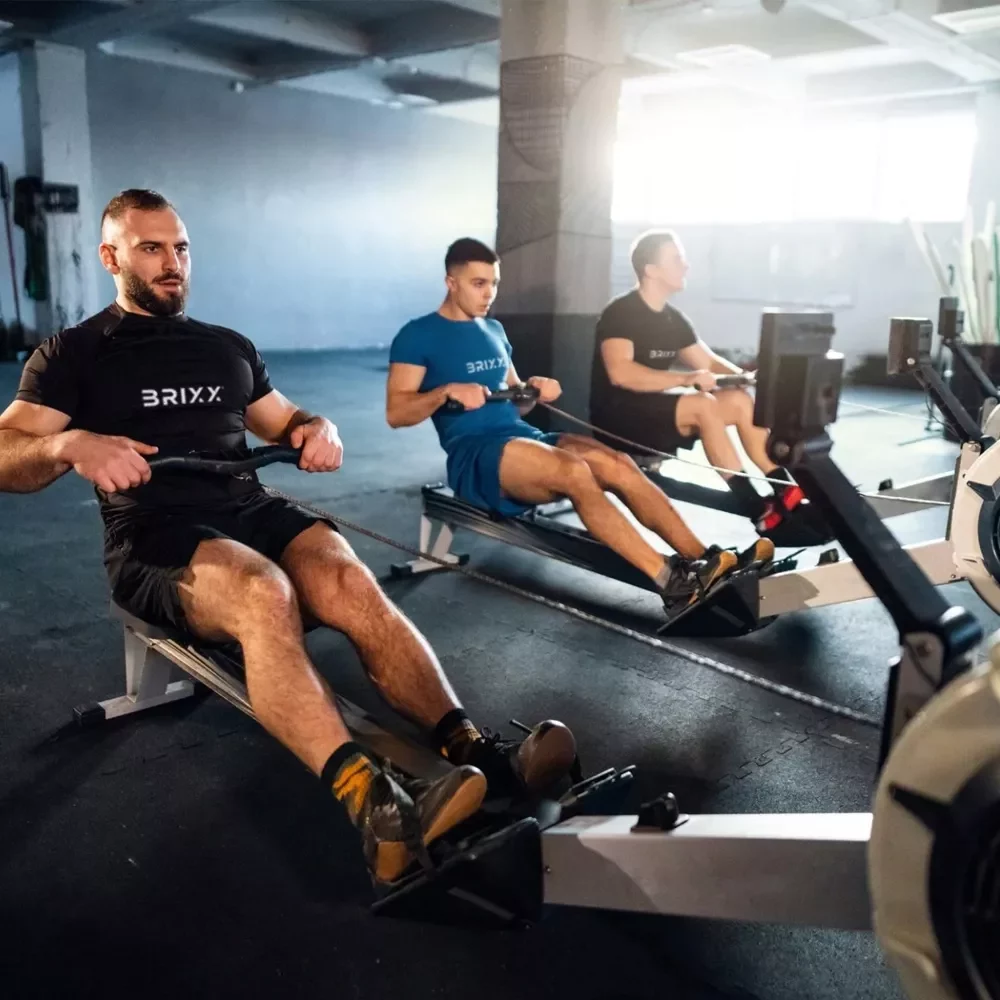
Fitness Reality 1000 Plus Bluetooth Magnetic Rowing Rower
Pros:
Cons:
Best For:
Assembly Tips:
Double-check all bolts, test the resistance, and adjust the foot straps for comfort.
Place it on a flat surface so it glides smoothly. When you’re done, just fold it up and put it away.
The Weider Pro 4950 is a feature-rich, multi-station, full-body workout machine designed to bring the classic gym experience into your home.
Its standout spec is the central weight stack system (approximately 125 lbs, with up to 300 lbs of effective resistance via a pulley system), which powers multiple built-in stations.
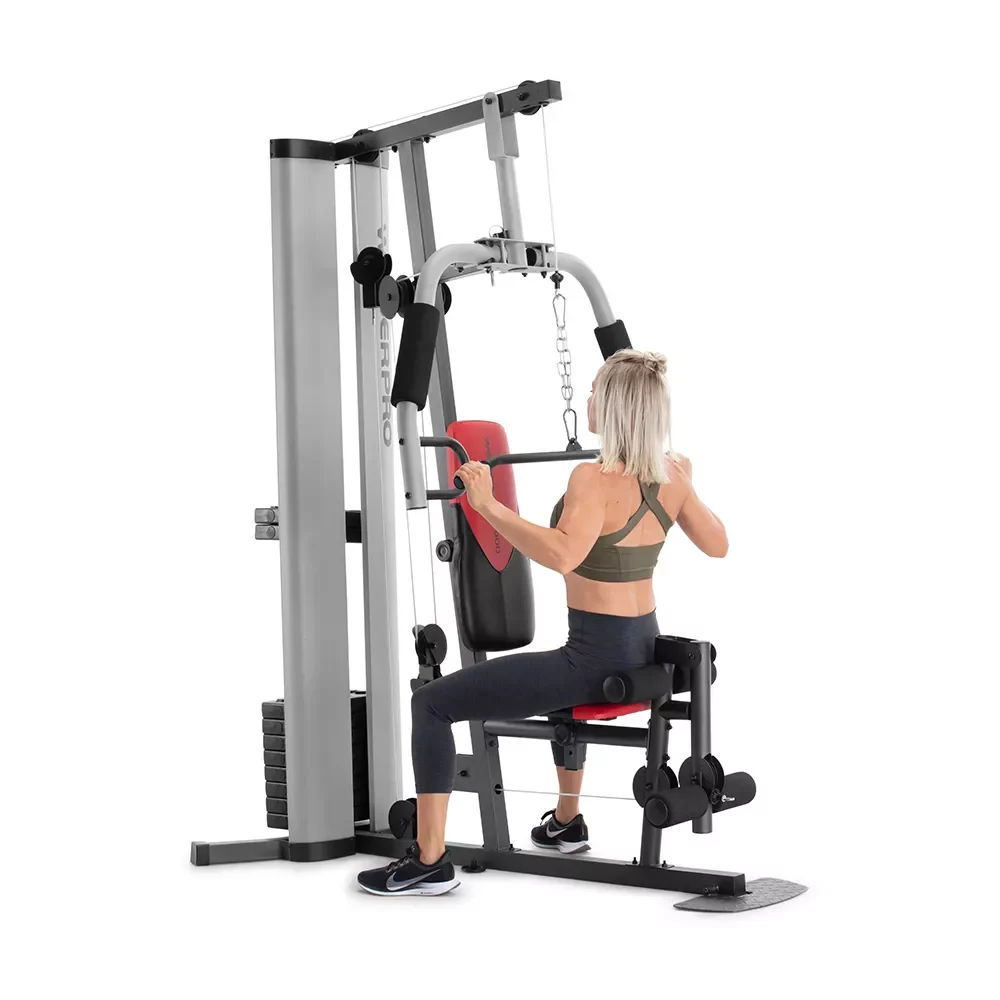
Weider Pro 4950
Pros:
Cons:
Best For:
Assembly Tips:
Follow the manual step-by-step, and once it’s built, double-check all bolts and test the cables to ensure everything runs smoothly.
This is one of the most practical entry-level home gym machines.
It delivers strength and cardio in one compact setup.
Its standout feature is the power rod resistance system (up to 200 lbs), which gives you joint-friendly resistance without the clunky weight stacks.
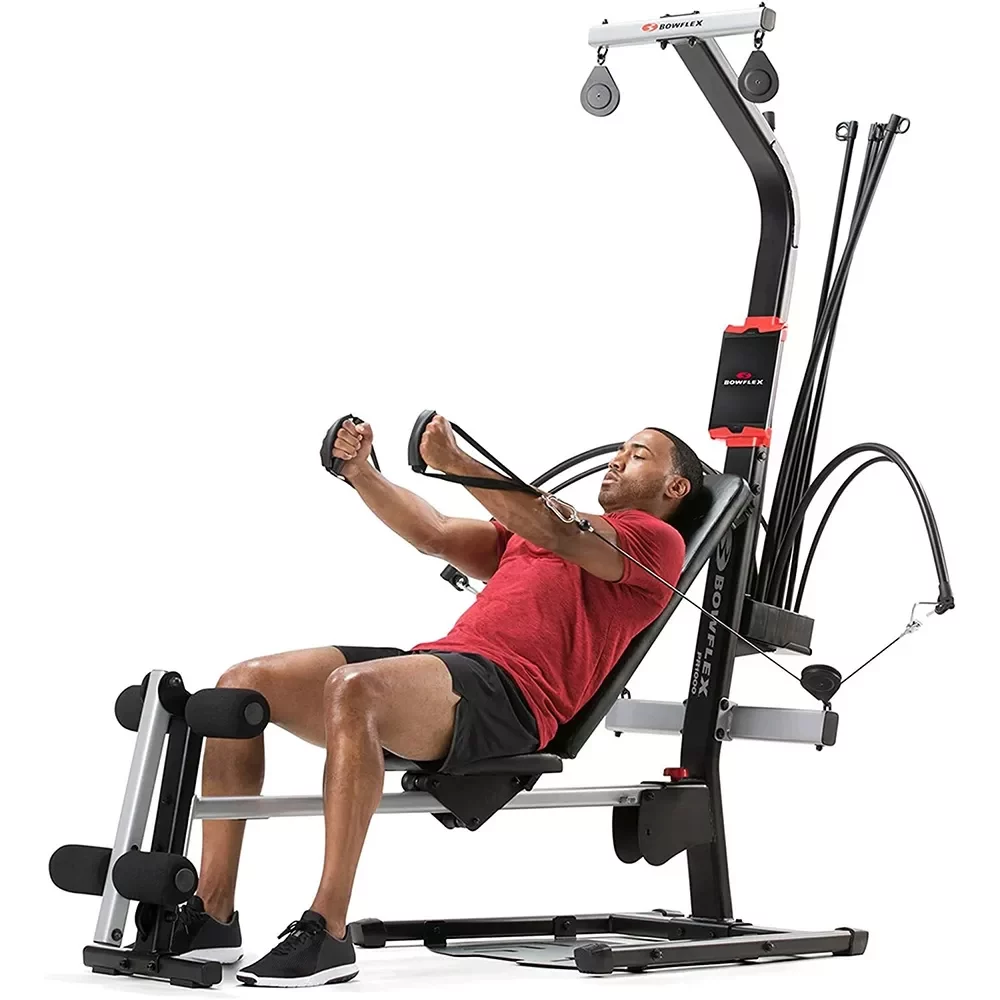
BowFlex PR1000 Home Gym
Pros:
Cons:
Best For:
Assembly Tips:
Lay everything out first, follow the manual closely, especially regarding cable routing, and avoid forcing anything.
Test as you go to avoid rework later.
This is a strong pick if you’re looking for a full-body workout machine that doesn’t break the bank.
It packs a traditional gym feel into one unit, featuring a 122.5 lb vinyl weight stack that provides up to 330 lbs of resistance through its pulley system.
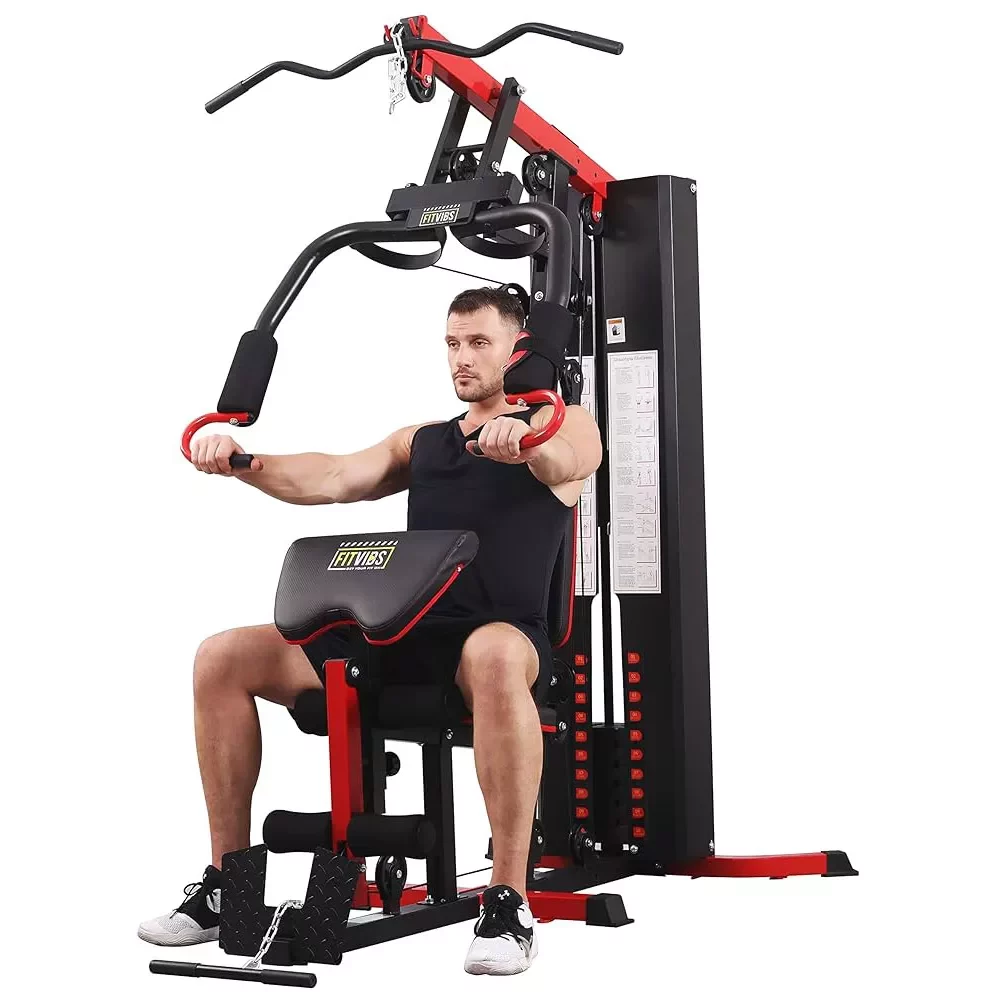
BalanceFrom Home Gym System Workout-Station
Pros:
Cons:
Best For:
Assembly Tips:
The parts are heavy, and there’s a lot to piece together.
Lay everything out first, sort your bolts and washers, and take it step by step.
Once it’s up, it’s staying there, so choose your workout spot before you start.
The Marcy MWM-990 is a solid option if you want a full-body workout machine that covers strength training without spending on a commercial setup.
It runs on a 150-pound selectorized weight stack, which allows you to switch resistance quickly.
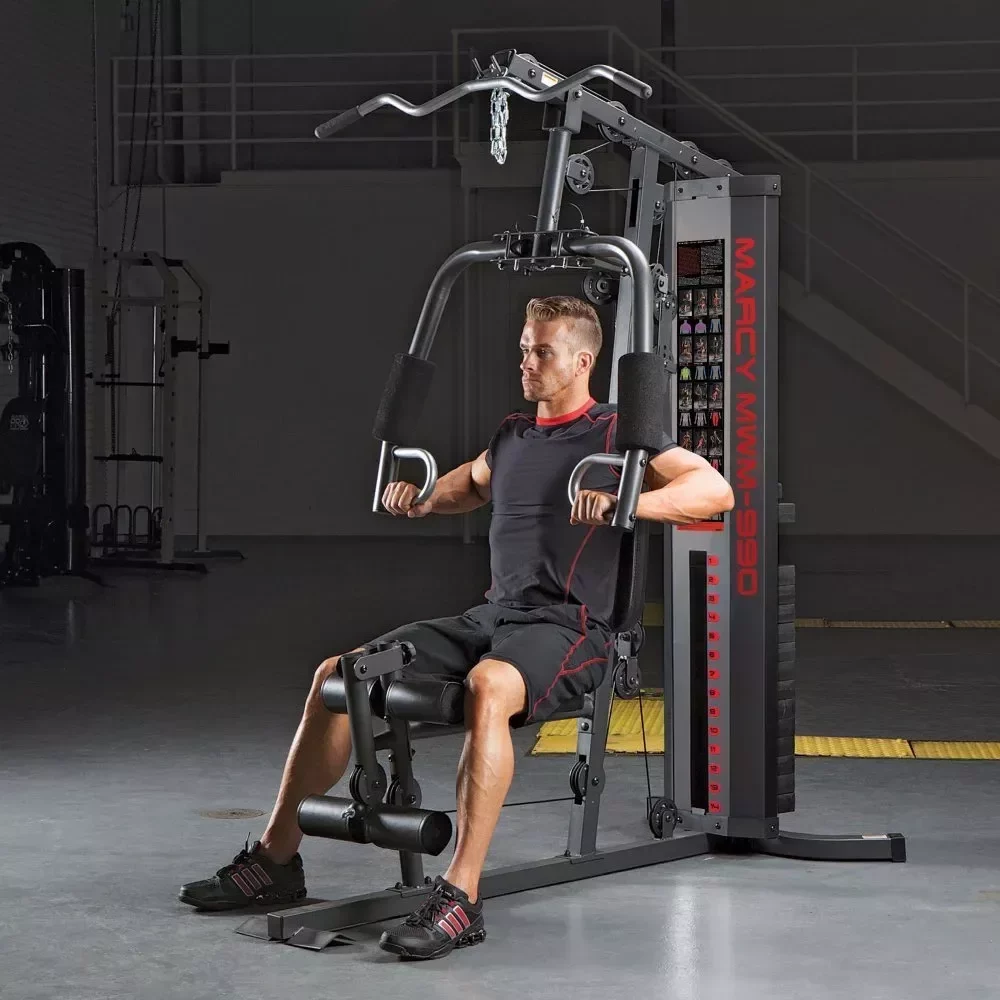
Marcy 150lb Stack Home Gym MWM-990
Pros:
Cons:
Best For:
Assembly Tips:
Sort all bolts and washers before you begin.
The manual is detailed, so follow it line by line.
Cable routing matters here; get it right the first time to avoid rework.
If you’re building a home gym, one machine that works your entire body just makes sense.
Unlike piecing together multiple devices, a full-body workout machine trains your muscles across multiple planes: push, pull, hinge, rotate, and more.
That means better strength, balance, and coordination, all in one go.
You’ll also get a solid cardio-metabolic load, helping you burn calories, build endurance, and boost heart health in less time.
And because it replaces a roomful of equipment, it saves a significant amount of space.
That explains why more people are ditching crowded gyms and building smart, efficient routines at home.
It’s no surprise that the smart gym (e.g., Tonal and Mirror, which can be mounted on your living room wall) market is expected to hit $4 billion by 2030.
The demand is relatively high.
And as these home workout solutions take over, the need for one machine that does it all—strength, cardio, and mobility (a.k.a. full-body machines)—has become greater than ever.
However, some machines take up too much space, while others are versatile, and others are simply not suitable for your preferred workout routines.
So, how do you choose?
Here’s what really matters when choosing the right machine:
Infographic showing four tips for choosing the best full-body workout machine with icons
Look for machines that:
A true full-body workout machine hits every major muscle group and considers all major needs for movement.
Can the machine:
The best machines help build muscle and support heart health.
The strength and cardio combo equals real results.
Ask yourself:
Compact, mobile, smart machines make it easier to stay consistent.
It’s not just about cost; it’s about the value you get:
Sometimes, spending more upfront yields better returns over time.
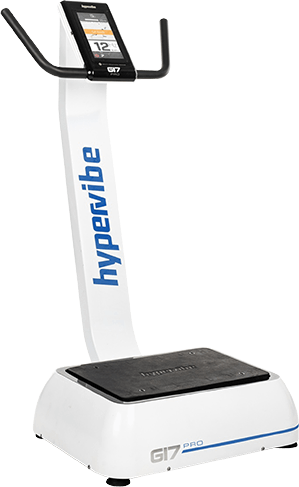




Here’s a step-by-step process:
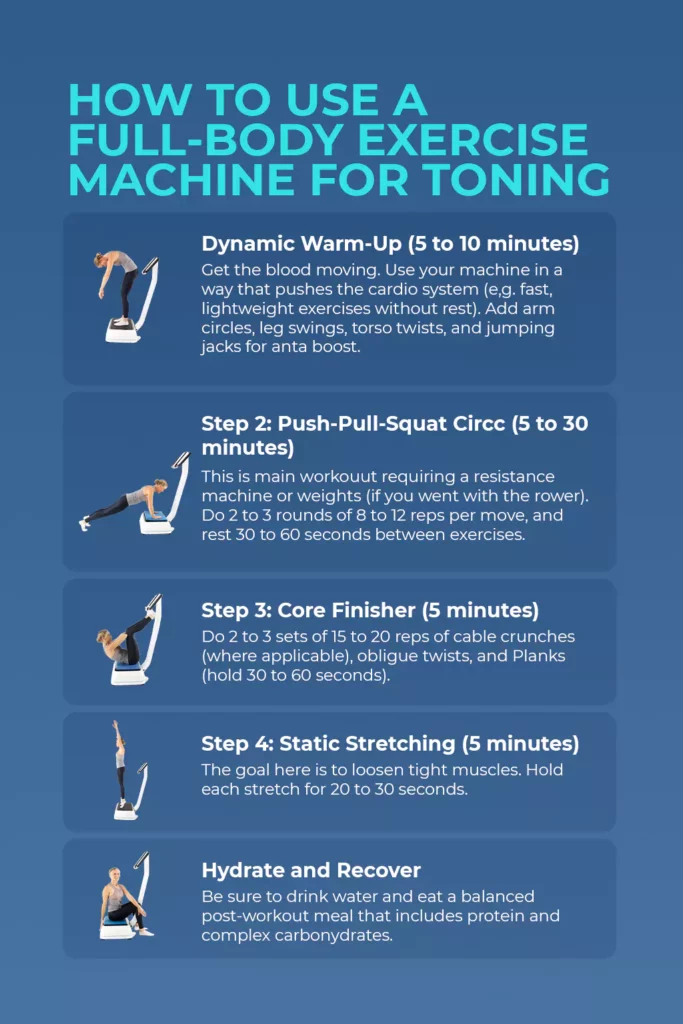
Infographic showing step-by-step guide to using a full-body vibration plate safely
Get the blood moving.
Use your machine in a way that pushes the cardio system (e.g., fast, lightweight exercises without rest).
If it’s a rowing machine or you have an elliptical trainer or treadmill, use that.
Add arm circles, leg swings, torso twists, and jumping jacks for an extra boost.
This is the main workout requiring a resistance machine or weights (if you went with the rower).
Do 2 to 3 rounds of 8 to 12 reps per move, and rest 30 to 60 seconds between exercises.
|
Push |
Pull |
Legs |
|
|
|
Do 2 to 3 sets of 15 to 20 reps of:
The goal here is to loosen tight muscles.
Hold each stretch for 20 to 30 seconds.
You’ll perform:
Be sure to drink water and eat a balanced post-workout meal that includes protein and complex carbohydrates.
Achieving results with a full-body workout machine takes more than effort—it takes structure.
Here are two different 4-week programs you can follow along with:
Structure:
Warm-up: 5 mins light cardio (as above with workout machine, or rower, elliptical, or treadmill)
HIIT Intervals: Complete 3-5 rounds of each:
Finally, cool-down: 5 mins static stretching
Structure:
Warm-up: 5 mins (as above)
Circuit:
Core Finisher: 2–3 moves, 2–3 sets of 15–20 reps
Then, cool-down: 5 mins static stretching
For accountability, download the progress tracker here.
It depends on your goals.
Machines are great for beginners, rehabilitation, and isolation exercises.
Free weights build more stabilizer strength and mimic real-life movements better.
The best approach? Use both if you can.
For most people, yes.
A good full-body workout machine can hit all major muscle groups, offer strength and cardio options, and save you time and space.
You might miss a few niche machines, but you’ll get results.
Start with what’s simple and safe:
We’ve just explored the full-body workout machine landscape, ranging from high-tech smart gyms and functional trainers to low-impact rowers, compact cable systems, and even beginner-friendly programs.
So, whether your goal is fat loss, strength, tone, or just feeling better in your body, there’s a machine (and a method) that fits.
But here’s what matters most: you don’t have to go all in to get started.
Suppose you’re looking for a full-body fitness routine, one that’s joint-friendly, time-efficient, and still effective.
In that case, we recommend the Hypervibe Whole Body Vibration Plates.
You’ll build strength, boost circulation, and feel more energized and so much more, all with minimal strain.
Not sure which machine fits your lifestyle?
Take our quick buyer’s survey here, and we’ll send you a personalized guide.
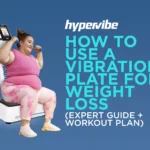
Here’s how we use a vibration plate for weight loss...

Many people, especially beginners, notice an itchy or tingling “pins-and-needles”...

Taking into consideration the growing popularity of the vibration plate,...

The lymphatic system, also called the lymphoid system, is an...
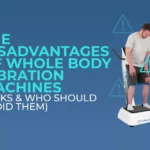
Are vibration machines bad for you? Yes, if used incorrectly....